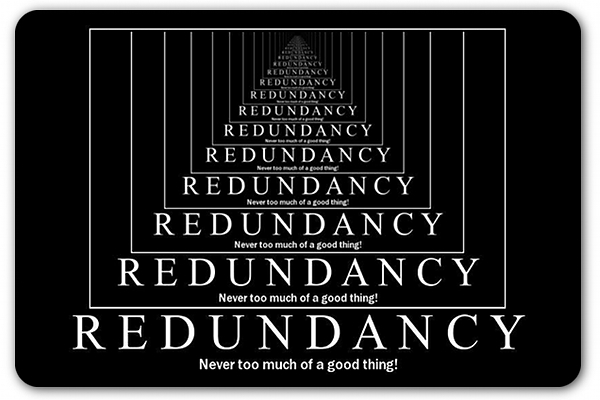REDUNDANCY
In redundancy technique, we store duplicate (copy) of original information, that is not needed normally, But that can be used in the case of a disk failure so that it can replace the contents of last information. thus, even if a disk fails, data is not lost, so that the Mean Time To Failure (MTTF) is increased. Moreover. by storing redundant information on disks, the reliability can be improved.
When implementing redundancy into disk array design, we have to make two choices.
First we have to decide where to store the redundant information i.e., we can either store the redundant information on a single disk (or) we can distribute the redundant information uniformly over all disks.
Second, we have to decide how to retrieve the redundant information. To retrieve the redundant information. the disk arrays uses the parity scheme, which contains an extra disk known as check disk that can be used to recover from failure if any disk fails. This is done, by maintaining a parity bit: that is if the disk contains information such as 1101, here the number of '1' is odd.then the first bit on the check disk known as parity bit is set to 1. Likewise, if the disk contain even number of 1's, then the check disk parity bit is set to 0.
Therefore, suppose if a disk fails then first count the number of 1's in failed disk, if it is odd then check its related parity bit in check disk which should be 1 , if both are not matching i.e., if there is odd number of 1's and parity bit is 0, then it means we have corrupted one 1 in failed disk, i.e., if parity bit is 0 there should be even number of 1's and we have first counted it was odd, so add one 1 to recover lost data.
Example : if the disk was 11101 before failure, so we have parity bit even as 0 then after failures it was 11001 i.e., odd number of 1's but parity bit maintained for the disk was 0. then we have corrupted one 1 so immediately add one 1 to the failure disk information to make it even number of 1's. Thus, with parity we can recover from failure of any one disk.

The article is so appealing. You should read this article before choosing the Big data engineering services you want to learn.
ReplyDeletebinance güvenilir mi
ReplyDeleteinstagram takipçi satın al
takipçi satın al
instagram takipçi satın al
shiba coin hangi borsada
shiba coin hangi borsada
tiktok jeton hilesi
is binance safe
is binance safe
SMM PANEL
ReplyDeleteSMM PANEL
iş ilanları
instagram takipçi satın al
hirdavatciburada.com
BEYAZESYATEKNİKSERVİSİ.COM.TR
servis
TİKTOK PARA HİLESİ İNDİR